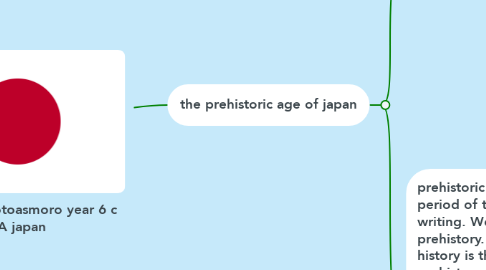
1. the prehistoric age of japan
1.1. the discoveries: in 1949 below a shell layer in the Higashiosaka shell mound in Yokohama City. He stood rather tall for a Jomon person: about 163 cm . . . X-rays of his bones show growth interruptions, interpreted as near-fatal spells of extreme malnutrition during childhood. The joints testify to early aging
1.1.1. stone age of japan: until 1949 in Ja~an, the term Stone Age referred to the time when Jomon pottery was bemg made; the Stone Age and the Joman Age were used synonymously. Following the discovery of the Iwajuku site in Gunma Prefecture, one piece of evidence after another was turned up that man had been present in Japan during the Pleistocene long before the Jomon Age, and the study of the Palaeolithic culture has now become one of the important parts of the archaeology of Japan.
1.1.1.1. old stone age of japan:Virtually unused wisdom teeth are partial evidence of a life-expectancy of about 30 years.” He lived sometime between 7500 and 5000 B.C., when Japan's population was probably around 22,000. Jomon culture was not new even then. Its defining innovation, pottery, was already thousands of years old.
1.1.1.1.1. middle stone age: Remains of earliest Paleolithic people in Japan were found in Okinawa (Ryukyu islands), in Kyushu, Shikoku and Shikoku prefecture in Central Japan.* Archaeologists are certain they did not originate in Japan and that the ancestors of the first Japanese Paleolithic people in both the Ryukyu islands and in Kyushu and Shikoku must have come from the nearby continent to the Japanese islands from around 30,000 years ago.
1.2. prehistoric period: Prehistory refers to the period of time before civilization and writing. We don't know a lot about prehistory. Since pre means "before," and history is the record of human events, prehistory refers to the time before human civilization developed and started writing things down.
1.2.1. metal age: it is divided into 3 parts: copper age bronze age iron age
1.2.1.1. copper age of japan: the yayoi period an Iron Age era in the history of Japan traditionally dated 300 BC–300 AD.[1] Since the 1980s, scholars have argued that a period previously classified as a transition from the Jōmon period should be reclassified as Early Yayoi.
1.2.1.1.1. bronze age: The Bronze Age is a historical period characterized by the use of bronze, and in some areas proto-writing, and other early features of urban civilization. The Bronze Age is the second principal period of the three-age Stone-Bronze-Iron system, as proposed in modern times by Christian Jürgensen Thomsen, for classifying and studying ancient societies.
1.2.2. the history of japans weapons: When I imagine a samurai, I envision a warrior with a sword. And not just any sword, but the world-renowned Japanese katana a curved blade engineered for cutting down foes with supreme efficiency. A Japanese battlefield conjures up more variety, with spear man and archers entering the mix.

